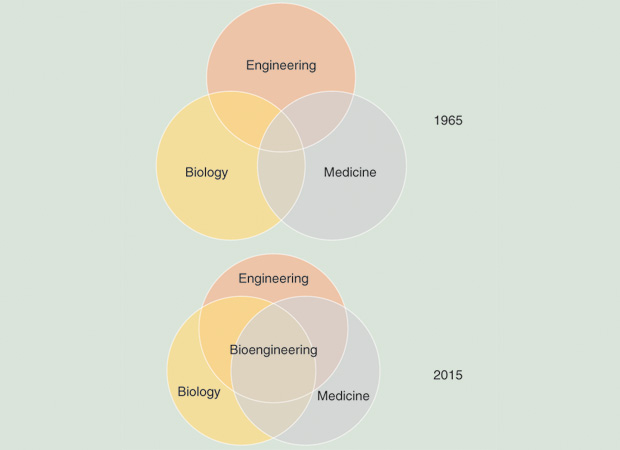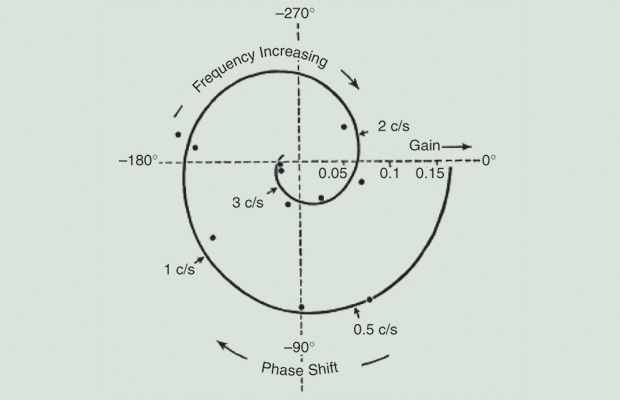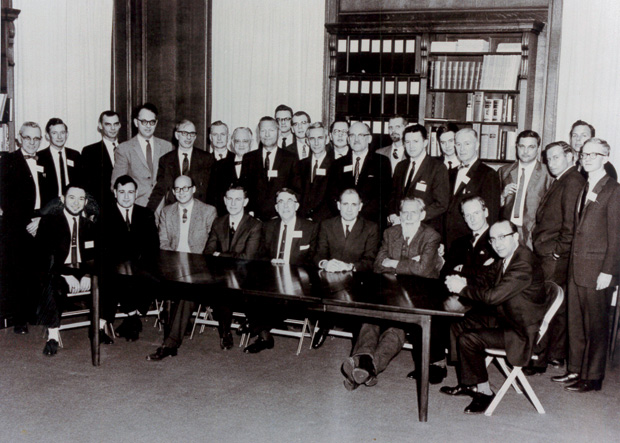Like the caduceus, a medical symbol of entwined serpents, bioengineering and cybernetics have interwoven together ideas and concepts for over 50 years. Half a century is a long time, and whether we are talking about an academic discipline, our lives, or an old car, achieving 50 is a number that brings pause to the conversation. In books, wine, or collectibles, 50 years is termed vintage, which carries the connotation of depth and maturity. Certainly, in the case of the discipline of bioengineering, 50 years is a milestone of growth and development. By all academic measures (number of departments, current enrollment and graduates, size of faculty, and impact factor for its publications), bioengineering is a mature discipline. Presently, there are almost 100 ABET-certified bioengineering degree programs in the United States alone.
Therefore, it is apt to take a moment to reflect and remind readers of the key role that cybernetics— originally defined by Norbert Wiener as the “control and communication of information in animals and machines”—played in the process. Hence, in this article, I trace the development of cybernetics from its beginnings at the Marcy cybernetics conferences (1946–1953) [17], [18]. I will also describe the active role of several early bioengineering faculty at the University of Illinois at Chicago (UIC) and the Massachusetts Institute of Technology (MIT). Finally, I sketch the literature that tracks the trajectory of biocybernetics ideas and concepts in the disciplines of bioengineering and bioinformatics.
A Brief History of Bioengineering
In the language of a Venn diagram, bioengineering growth occurs at the intersection of biology, engineering, and medicine (Figure 1). Early attempts to measure and model physical, chemical, and biological phenomena in a quantitative manner began in the early 19th century, during a time that historian Richard Holmes termed, in the title of his 2008 book, The Age in Wonder [1]. Among the many contributors who extended these models to medicine, the work of Hermann von Helmholtz stands out for its rigor in the application of physics and mathematics to vision and hearing. Surprisingly, Helmholtz, now known primarily as a physicist, began his career as a physiologist [2]. This progress led, for example, to definitive work on the electrical properties of membranes, cells, and tissues by K.W. Wagner, H. Fricke, J.F. Danielli, and the brothers K.S. and R.H. Cole—advances that culminated in the 1950s in the Nobel Prize–winning work by A.L. Hodgkin and A.F. Huxley describing a mathematical model of the action potential [3]. It was from this biophysical foundation, supplemented by the rapid development of analog computers and electronics during World War II, that cybernetics and, later, neural engineering emerged as new disciplines in the 1950s and 1960s. One physician-scientist who saw this coming was Larry Stark, a 1948 Albany Medical School graduate and assistant professor of neurology at Yale University.
larry stark and Cybernetics
Unable to describe the dysfunctional mechanism underlying disorders of motor coordination in his patients, in the 1950s, Stark began taking graduate courses in electrical engineering at Yale. The dynamic engineering models of circuits, feedback, and control theory filled his mind with new ways to describe human neurological control of the pupil, the lens, eye rotation, and hand movement. Linking the ideas of computers and control to neurological function in humans was the domain of the new field of cybernetics, a word Weiner coined in 1948 [4] and a birth announced in the end-of-year issue of Time magazine.
Moving first to MIT in 1960 and then to UIC in 1965, Stark pioneered new tools and techniques ( Figure 2 in [5]) to describe the motor systems associated with the eye (oculomotor, pupillary, and accommodative), lens accommodation, and coordinated hand–eye movements. These advances were collected and published in his 1968 book, Neurological Control Systems: Studies in Bioengineering [6]. In Chicago, Stark worked at both Presbyterian-St. Luke’s Hospital (now Rush University Medical Center) and at UIC. He was the founding head of the bioengineering program and of the Department of Bioengineering at UIC. The founding faculty were Earl Gose, Derrick Hendry, Arne Troelstra, and Bert Zuber. Stark left Chicago in 1968 to accept a position as a professor of physiological optics in the School of Optometry at the University of California (UC), Berkeley, where he spent the remainder of his career, retiring in 1994.
In his 2014 book [7] The Innovators, Walter Isaacson describes how our modern age of integrated circuits, personal computers, and the Internet was spawned by innovation, creativity, and teamwork. Over his career, Stark worked to serve the needs of his Parkinson’s patients by building new disease models and measurement systems to evaluate, retrain, and, in some cases, restore normal motor–sensory control. He built teams, originated novel concepts (e.g., Nyquist plots of eye movement and scanpath analysis of visual field of view), and created new instruments for neural assessment (such as the pupillometer and the closed-loop hand–eye controller). With these efforts, he was not only a pioneer in developing the field of neural engineering but was also a living link with the analog/ digital control models of Vannevar Bush, John von Neuman, Allen Turing, Claude Shannon, Jerome Lettvin, Norbert Wiener, and Warren McCulloch.

Contributions of Warren McCulloch
The name Warren McCulloch occurs often in the work of Larry Stark, but it is perhaps not as well known as the others listed previously—although it should be. In Figure 3, a photograph that I think was taken in 1963 in Boston at a meeting of the American Society of Cybernetics, we see Larry Stark, Claude Shannon, and Warren McCulloch among the conference attendees. McCulloch wrote the foreword to Stark’s 1968 book [6], and in his introduction, Stark writes, “In 1948, when I was still a medical student, I obtained Professor Shannon’s paper, ‘Mathematical Theory of Communication,’ and for the last fifteen years I have been stimulated by Prof. Warren McCulloch’s work in the exciting field of bioengineering and cybernetics.”

First, what kind of medical student is reading papers in the Bell System Technical Journal [8], and, second, what was McCulloch’s role in bioengineering and cybernetics? The answer to the first question, of course, is that Stark was not a typical medical student. The answer to the second question is illuminating. It rests, in part, on McCulloch’s classic paper with Walter Pitts, “A Logical Calculus of the Ideas Immanent in Nervous Activity,” published in the Bulletin of Mathematical Biology [9], where they tried to understand how the brain—composed of a multitude of individual all-or-none responding neurons—could be arranged in networks to produce distinct logical operations. This paper is often cited for its role in germinating the field of artificial intelligence and was, in fact, noted by Alan Turing as a key paper stimulating his investigations into so-called thinking machines. Another illuminating part of the answer is evident in the affiliations of the two authors. In 1943, Pitts was a student researcher at the University of Chicago, and McCulloch was on the faculty in the Department of Psychiatry at the University of Illinois College of Medicine.
McCulloch left Chicago in 1952 to accept a position directing neurophysiological research in the Research Laboratory of Electronics at MIT, where he later met Larry Stark. During this time, he also conducted seminal work with Jerome Lettvin, Humberto Maturana, and Walter Pitts on the preprocessing of visual scenes by the retina, “What the Frog’s Eye Tells the Frog’s Brain” [10]. All this joint research is documented in McCulloch’s 1965 book Embodiments of Mind [11].
Interested readers who want to track down additional connections between this cast of characters in the advent of neural engineering, neural networks, and artificial intelligence should start with the early Scientific American articles (“Cybernetics” [12] by Wiener and “Mathematical Machines” [13] by Harry M. Davis) and the review by Frederik Nebeker, “Golden Accomplishments in Biomedical Engineering” [14]. The ensuing history and context of these discoveries are all described in full in the 2011 book The Information: A History, a Theory, a Flood [15] by James Gleick and in the 2015 book The Cybernetics Moment: Or Why We Call Our Age the Information Age [16] by Ronald R. Kline.

In Stark’s Words
I will close this article with a quote by Stark, taken from a video interview recorded in 2000 at UC Berkeley as part of its “Conversations with History” series. In a discussion with host Harry Kreisler of his scanpath idea for assessing how the eye moves over an image with the aim of capturing all its information content, Stark notes, “We all view the world with a discrete imaging tool, one which gives us an imprecise view of the world, but nevertheless is smoothed out by the brain, creating an illusion of clarity and completeness.” He apologizes for the metaphor, but I think that it not only identifies key features in the visual system but could also be applied to the lens that our mind uses to look back over history.
References
- R. Holmes, The Age of Wonder: How the Romantic Generation Discovered the Beauty and Terror of Science. London, U.K.: HarperPress, 2008.
- D. Cahan, Ed., Hermann von Helmholtz and the Foundations of Nineteenth-Century Science. Berkeley, CA: Univ. of California Press, 1993.
- A. L. Hodgkin and A. F. Huxley, “A quantitative description of membrane current and its application to conduction and excitation in nerve,” J. Physiol., vol. 117, no. 4, pp. 500–544, 1952.
- N. Wiener, Cybernetics, or Control and Communication in the Animal and the Machine, Cambridge, MA: MIT Press, 1948.
- L. Stark, “Stability, oscillations, and noise in the human pupil servomechanism,” Proc. Inst. Radio. Eng, vol. 47, no. 11, pp. 1925– 1939, 1959.
- L. Stark, Neurological Control System: Studies in Bioengineering. New York: Plenum, 1968.
- W. Isaacson, The Innovators: How a Group of Hackers, Geniuses, and Geeks Created the Digital Revolution. New York: Simon and Schuster, 2014.
- C. E. Shannon, “Mathematical theory of communication,” Bell System Tech. J., vol. 27, pp. 379–423, Jul. 1948.
- W. S. McCulloch and W. Pitts, “A logical calculus of the ideas immanent in nervous activity,” Bull. Math. Biol., vol. 5, pp. 115–133, 1943.
- J. Y. Lettvin, H. R. Maturana, W. S. McCullough, and W. H. Pitts, “What the frog’s eye tells the frog’s brain,” Proc. Inst. Radio. Eng, vol. 47, no. 11, pp. 1940–1951, 1959.
- W. S. McCulloch, Embodiments of Mind. Cambridge, MA: MIT Press, 1965.
- N. Wiener, “Cybernetics,” Sci. Amer., vol. 179, pp. 14–19, Nov. 1948.
- H. M. Davis, “Mathematical machines,” Sci. Amer., vol. 180, pp. 29–38, Apr. 1949.
- F. Nebeker, “Golden accomplishments in biomedical engineering: 50 years of the IEEE engineering in medicine and biology society and the emergence of a new discipline,” IEEE Eng. Med. Biol. Mag., vol. 21, no. 3, pp. 17–47, 2002.
- J. Gleick, The Information: A History, a Theory, a Flood. New York: Pantheon Books, 2011.
- R. R. Kline, The Cybernetics Moment: Or Why We Call Our Age the Information Age. Baltimore, MD: The Johns Hopkins Univ. Press, 2015.
- American Society for Cybernetics. The Macy Conferences. [Online].
- Wikipedia. (2016, June 5). Macy conferences. [Online].



